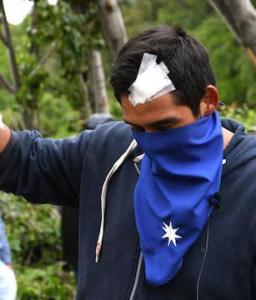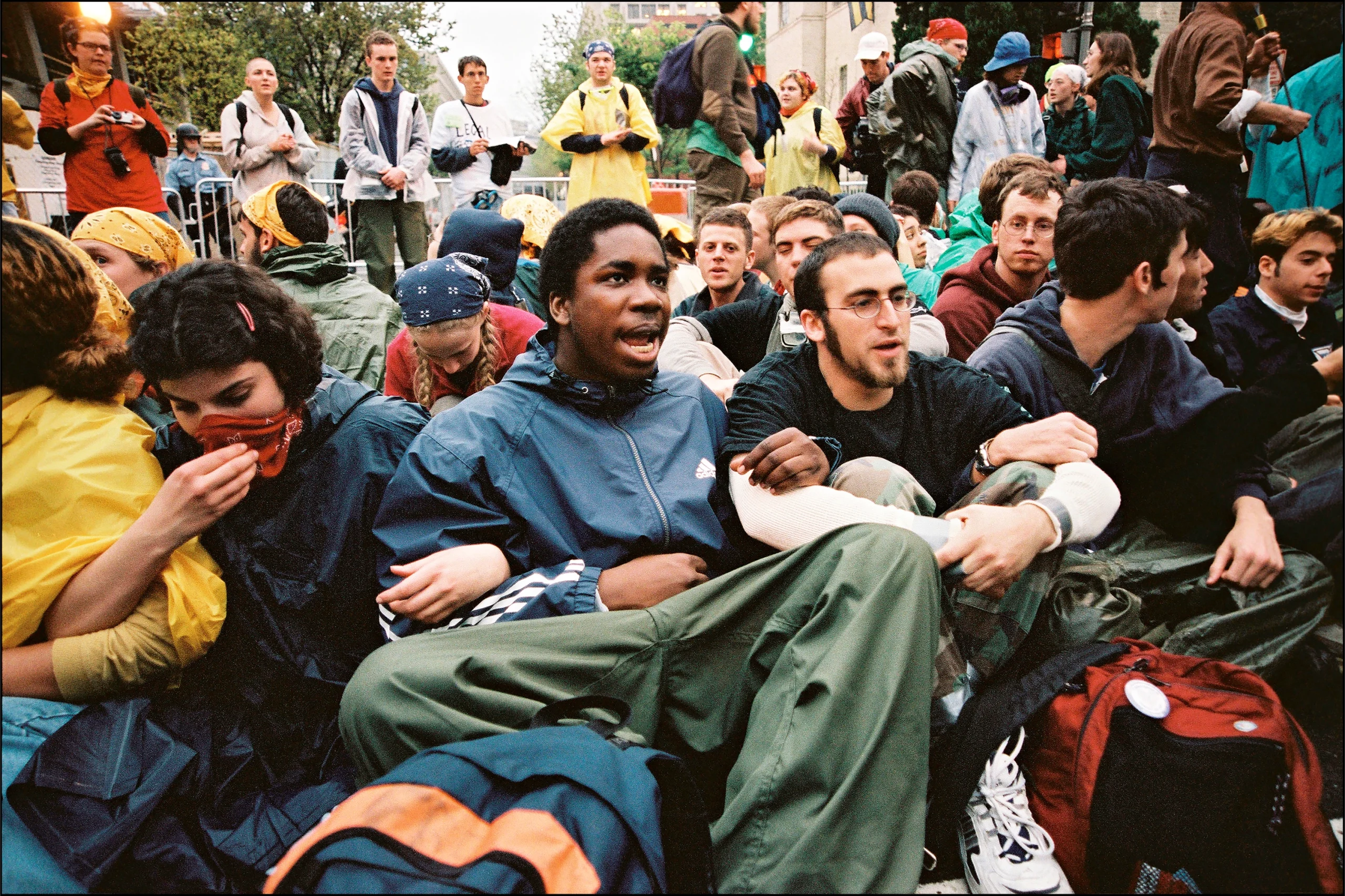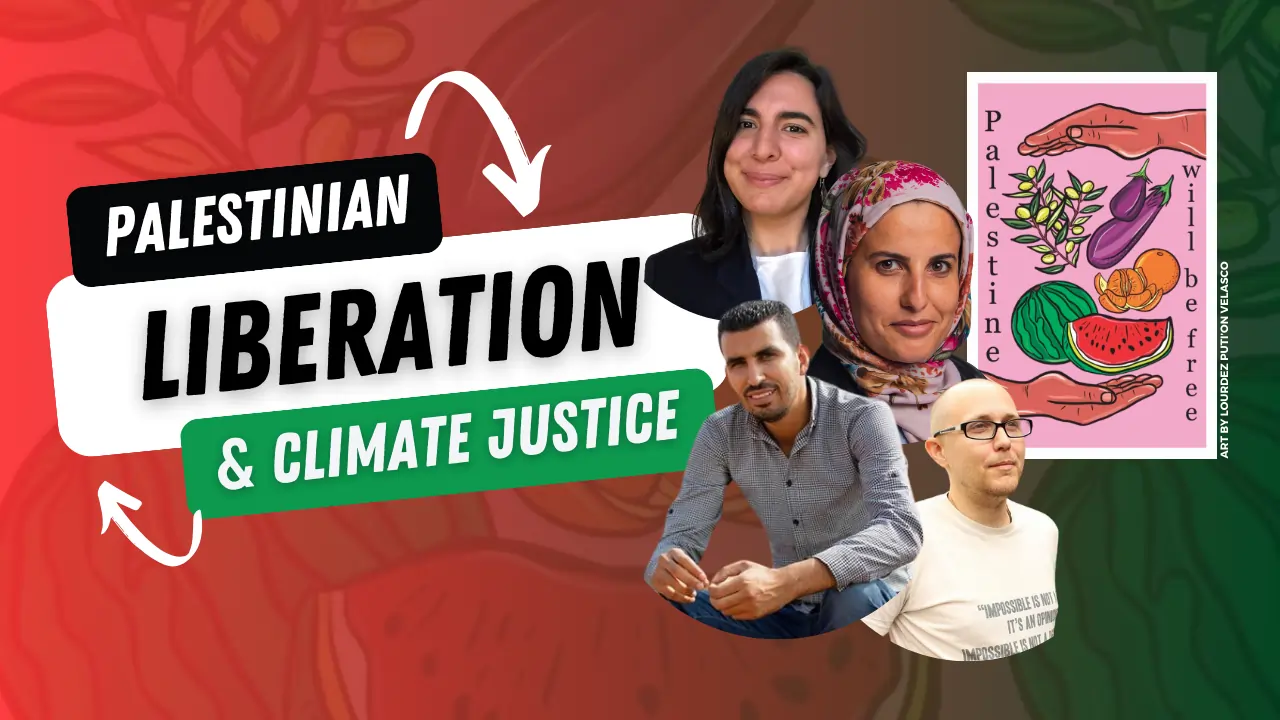Image: Santiago Chile- On International Human Rights Day, Dec 10, 2019 people in Chile protested the 400+ eyes lost to the Carabineros de Chile (National Police) during the days of uprising in Chile. Photo: Langelle/GJEP
Imagen: Santiago de Chile- Día internacional de los Derechos Humanos, 10 de diciembre de 2019. Los manifestantes denunciaban los más de 400 ojos mutilados durante las intervenciones de los Carabineros (Policía Nacional) durante los días del levantamiento Fotografía: Langelle/GJEP
Español abajo
GLOBAL JUSTICE ECOLOGY PROJECT
For Immediate Release 06/15/2020 For More Information +1.314.210.1322
From Chile to Minneapolis: Use of ‘Less than Lethal’ Weapons by Police Draws Criticism as Means to Intimidate and Silence
New York – On Saturday, May 30, Brandon Saenz reportedly lost an eye and seven teeth when he was hit by so-called less than lethal munitions (in actuality less lethal) fired by police. Saenz was reportedly struck by a rubber bullet like munition when the Minneapolis police fired less lethal weapons at people peacefully protesting the killing of George Floyd at the hands of the Minneapolis police.
“Hearing about the loss of an eye by Saenz immediately brought to my mind what happened prior to the COVID-19 quarantine during the peoples’ uprising in Chile,” said Orin Langelle, a GJEP photographer who documented the protests in Chile from Nov 22 to Dec 17 last year for Los Angeles’ Pacifica Radio. “The Chilean National Police targeted the heads and eyes of civilians when they used shotguns to fire rubber-coated metal pellets into their faces.”
“Over 400 people suffered serious eye injuries and some have been rendered completely blind,” said Langelle. “The stories of protesters in the U.S. and Chile about these less lethal munitions show the similarities of militarized police forces attempting to put down popular resistance to injustices in both South and North America.”
Ferguson, MO native and filmmaker, Chris Phillips, was documenting protests in Minneapolis over the killing of George Floyd when he had rubber bullets fired in his direction several times. He was also hit in the leg by a flash bang/stun grenade during his work to video protests.
Phillips was one of the first professional videographers to capture events and protests surrounding the 2014 killing of Michael Brown. “From my experience filming in the Ferguson and Minneapolis protests, projectiles and chemical munitions have been used liberally, and often it is not preceded by any dispersal order or direction for people to go,” said Phillips.
Phillips believes the way in which less lethal munitions are being used currently seems to be illegal. “Without those directives, it is safe to assume that firing projectiles into a crowd that has the Constitutional right to assemble and protest, and not taking into consideration occupants and residents that are uninvolved in these demonstrations, makes it reckless, alluding to the purpose of serving more of a retaliatory purpose than the intent of keeping the public safe.”

Image from Phillips Instagram page: Phillips holding rubber bullet that was shot in his direction during his work as a filmmaker in Minneapolis.
Chris Phillips is principal director of the Maverick Media Group.
https://www.maverickmediagroup.

This indigenous Mapuche man was shot in the head with metal-filled rubber pellets by the Carabineros de Chile (national police) earlier in the morning on November 28, 2019. He was part of a Mapuche land occupation. Carabineros fired metal-filled rubber pellets and tear gas injuring several people at the land occupation.
Orin Langelle is a photojournalist with over five decades of experience.
PROYECTO DE JUSTICIA ECOLÓGICA GLOBAL
Difusión inmediata 06/15/2020
Desde Chile a Minneapolis: el uso policial de armas ‘sub-letales’ genera críticas por convertirse en medios para intimidar y silenciar
Nueva York – El sábado 30 de mayo Brandon Sáenz perdió un ojo y siete dientes, según informes, cuando fue alcanzado por un proyectil de las llamadas municiones sub-letales (en realidad, ‘menos letales’) disparadas por la policía. Sáenz fue golpeado por una bala de goma cuando la policía de Minneapolis disparó su armamento sub-letal a las personas que protestaban pacíficamente por el asesinato de George Floyd a manos del mismo cuerpo policial.
“Al conocer el caso de la mutilación del ojo de Sáenz, pensé inmediatamente en lo que pasó justo antes de la cuarentena por el COVID-19 en las manifestaciones populares en Chile”, comentó Orin Langelle, un fotógrafo del Proyecto de Justicia Ecológica Global (GJEP) que documentó las protestas en Chile entre el 22 de noviembre y el 17 de diciembre del año pasado para Pacifica Radio de Los Ángeles. “La Policía Nacional de Chile disparó a la cabeza y a los ojos de los manifestantes utilizando escopetas con munición metálica recubierta de goma”.
“Más de 400 personas sufrieron heridas oculares graves y algunas quedaron completamente ciegas”, dijo Langelle. “Las historias de los manifestantes en Estados Unidos y Chile sobre el uso de estas municiones sub-letales dejan en evidencia las similitudes entre las formas en que los cuerpos de policía militarizada intentan aplastar la resistencia popular ante la injusticia tanto en América del Norte como en América del Sur”.
Chris Phillips, director audiovisual originario de Ferguson, en Missouri, estaba documentando las protestas en Minneapolis por el asesinato de George Floyd cuando le dispararon varias veces con balas de goma. También fue alcanzado en una pierna por una granada aturdidora mientras grababa las manifestaciones.
Phillips fue uno de los primeros cámaras profesionales que grabaron los eventos y protestas que tuvieron lugar en 2014 a raíz del asesinato de Michael Brown. “Mi experiencia después de grabar las protestas de Ferguson y Minneapolis es que los proyectiles y municiones químicas se han usado libremente y, con frecuencia, sin cualquier orden o indicación previa para que la gente se dispersase”, comenta Phillips.
Phillips cree que la forma en la que se están usando actualmente las municiones sub-letales parece ilegal. “Sin esas indicaciones, es fácil concluir que resulta temerario disparar proyectiles hacia gente que está ejerciendo su derecho constitucional de reunirse y protestar, sin contar con los residentes y viandantes ajenos a las manifestaciones, siendo más bien una acción de retaliación y no para preservar la seguridad de las personas”.

Imagen de la página de Instagram de Phillips: Phillips sujeta una bala de goma disparada hacia él mientras trabajaba grabando en Minneapolis.
Chris Phillips es Director Principal de Maverick Media Group.
https://www.maverickmediagroup.

A este indígena Mapuche los Carabineros de Chile (Policía Nacional) le dispararon en la cabeza con munición metálica recubierta de goma durante la mañana del 28 de noviembre de 2019. Formaba parte de una ocupación de tierras por Mapuches. Los Carabineros dispararon goma con interior metálico y gases lacrimógenos causando heridas a varias personas en la ocupación de tierras.
Orin Langelle es un fotoperiodista con más de cinco décadas de experiencia.



